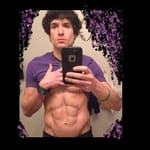Bodybuilding has evolved dramatically since its inception, transforming from a niche activity to a globally recognized sport and cultural phenomenon. From the early days of physical culture to the mass monsters of today, this journey reflects not only advancements in training and nutrition but also the changing perceptions of health, fitness, and aesthetics. Here’s a look at the fascinating evolution of bodybuilding and its impact on the world.
The Origins: Physical Culture and Strength Exhibitions
The roots of bodybuilding can be traced back to the late 19th century, when physical culture became a popular movement in Europe. Eugen Sandow, often referred to as the “Father of Modern Bodybuilding,” emerged as one of the first icons of this era. Sandow showcased his sculpted physique in strength exhibitions, combining feats of power with poses that highlighted his symmetrical musculature.
In 1901, Sandow organized the first-ever bodybuilding competition at the Royal Albert Hall in London. The event was judged on aesthetics rather than strength, emphasizing balance, proportion, and muscularity. This laid the foundation for modern bodybuilding, shifting the focus from sheer strength to the art of developing the human body.
The Golden Era: Aesthetic Perfection in the 1940s-1970s
The 1940s saw the rise of Steve Reeves, a Hollywood actor and bodybuilder who embodied the ideal of classical aesthetics. With his V-shaped torso, small waist, and well-proportioned muscles, Reeves became a global icon and inspired countless individuals to pursue fitness.
In the 1960s and 1970s, bodybuilding entered its “Golden Era,” centered around Venice Beach, California, and the famed Gold’s Gym. This period was defined by athletes like Arnold Schwarzenegger, Franco Columbu, and Frank Zane. These bodybuilders prioritized aesthetics, focusing on symmetry, proportion, and posing artistry. The documentary Pumping Iron (1977) captured this era’s spirit, turning Arnold into a household name and popularizing bodybuilding worldwide.
The Mass Monster Era: 1980s-1990s
The 1980s marked a significant shift in bodybuilding with the rise of Lee Haney, who won a record eight consecutive Mr. Olympia titles. Haney’s combination of size, symmetry, and conditioning set a new standard, ushering in the era of “mass monsters.”
This trend continued into the 1990s with Dorian Yates, who redefined the sport with his unprecedented muscle mass and density. Yates introduced high-intensity training and brought a level of conditioning never seen before. His successors, like Ronnie Coleman and Jay Cutler, pushed the boundaries of size and strength even further, creating physiques that were as awe-inspiring as they were polarizing.
Modern-Day Bodybuilding: The Rise of Diversity
Today, bodybuilding has diversified significantly, with multiple categories catering to a wide range of physiques and goals. Alongside the traditional Open Division, there are now divisions like Classic Physique, Men’s Physique, and Bikini, each emphasizing different aspects of aesthetics, proportion, and presentation.
Modern athletes like Phil Heath, Kai Greene, and Chris Bumstead have brought their unique styles to the stage, blending the size of the mass monster era with the aesthetics of the Golden Era. Social media has also transformed the sport, allowing bodybuilders to connect directly with fans, share their journeys, and build personal brands.
The Influence of Technology and Science
Advancements in technology and sports science have played a pivotal role in bodybuilding’s evolution. From advanced training techniques to precision nutrition and recovery tools, today’s athletes have access to resources that were unimaginable a century ago.
High-quality supplements, wearable fitness trackers, and cutting-edge gym equipment enable bodybuilders to optimize their performance and monitor progress in real-time. Research on muscle hypertrophy, protein synthesis, and periodization has also deepened our understanding of how to build muscle effectively and sustainably.
Bodybuilding’s Cultural Impact
Bodybuilding’s influence extends far beyond the gym. It has shaped global fitness trends, popularized gym culture, and inspired countless individuals to prioritize health and wellness. Iconic figures like Arnold Schwarzenegger and Lou Ferrigno have used their platforms to promote fitness as a way of life, while modern influencers like Simeon Panda and Dana Linn Bailey continue to inspire through social media.
The sport has also sparked important conversations about body image, discipline, and mental resilience. While bodybuilding celebrates the pursuit of physical perfection, it also highlights the mental strength required to overcome challenges and stay committed to one’s goals.
The Future of Bodybuilding
As bodybuilding continues to evolve, its future looks brighter than ever. The sport is becoming more inclusive, with growing participation from women, older adults, and individuals from diverse backgrounds. Events like the Arnold Sports Festival and Olympia Weekend attract thousands of fans and competitors, showcasing the sport’s global appeal.
Sustainability and health are also becoming central themes, with an increasing emphasis on long-term well-being rather than extreme practices. This shift reflects a broader cultural move toward balance and holistic fitness, ensuring that bodybuilding remains relevant and accessible for generations to come.
A Legacy of Inspiration
From Sandow’s early exhibitions to today’s Instagram stars, bodybuilding has come a long way. Its evolution mirrors society’s changing attitudes toward fitness, health, and aesthetics, proving that the pursuit of physical excellence is a timeless endeavor. Whether you’re a fan of the Golden Era, the mass monsters, or modern physiques, bodybuilding’s rich history offers endless inspiration for anyone looking to better themselves.


